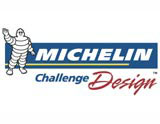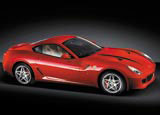Michelin design contest focuses on EU safety rules
In the week that Detroit was bombarded by car-lovers from across the globe, Michelin announced the theme for its 2007 Challenge Design competition ‘road safety for everyone’. Michelin’s decision highlights the impact that EU safety legislation is having

In the week that Detroit was bombarded by car-lovers from across the globe, Michelin announced the theme for its 2007 Challenge Design competition – ‘road safety for everyone’. Michelin’s decision highlights the impact that EU safety legislation is having on vehicle design.
In a turnaround from the geographical design themes of the previous five competitions, Michelin’s move acknowledges that the shape, weight and materials used in new cars will have to be rethought. Pedestrian protection legislation, which came into effect last October, restricts car design by making specific demands about the shape, height and angles of the bonnet.
‘Legislation could be a restraint on creativity, but I’ve been surprised by the young designers who accept these limitations and see them as just another design challenge’, says Tom Chubb, vice-president of equipment marketing at Michelin.
There is some agreement from major car designers that the restrictions signal a positive change for design. ‘It’s now more of a challenge to get a sloping front and smooth angles. These regulations leave us with an exciting new design language’, says a senior designer at Ford. ‘The belief that cars will be ugly and blunt-nosed is a myth’, he adds.
Manufacturers such as Audi already make cars that pass EU testing without the need for modification. But low-to-the-ground, luxury fast cars face the toughest challenge, as designers strive to make them fashionably streamlined and approved by the European New Car Assessment Programme.
Jaguar responded to the restrictions by developing new technology. The Jaguar XK – on sale this March – has a deployable bonnet, raised by explosive bolts mounted in the engine bay.

Sebastian Conran, creative director at Conran and Partners, says cyclists could benefit from improved car door design, and suggests that sliding doors, or doors that ‘ping’ back if hit, may be a solution. ‘Michelin’s competition is a positive move, to attract people to think about road safety,’ says Conran.
This year’s Michelin Design Challenge, at the North American International Auto Show in Detroit, attracted 200 entrants and, of the 36 chosen for exhibition, 16 came from Europe. The show included full-sized vehicles, models and drawings. For 2007, Michelin is looking for vehicles to share the road more safely with lorries, motorcycles and pedestrians. The deadline is 21 April. Winners will be selected by June and the exhibition will be launched in January 2007.
Michelin will be looking to glean ideas for new tyre technology, but the car design industry will be waiting to see if a marketable luxury fast car can be developed that ticks all the test boxes.
EU CAR DESIGN LEGISLATION:
• 2001 – The European Commission and European vehicle manufacturers set targets to improve pedestrian protection by 2012
• 2002 – Rigid bull bars banned from the bumpers of new vehicles
• 2005 – The first phase of legislation aimed at protecting against pedestrian head and leg injuries comes into effect for new cars, to apply to all cars by 2012. The restrictions include low bumpers, a minimum distance of 8cm between the bonnet and the engine, and a softened joint between the bonnet and the wing
• 2010 – Phase Two of the legislation – to reduce pedestrian collision impact by a further 25 per cent – comes into effect
DETROIT MOTOR SHOW 2006
The North American International Auto Show runs until 22 January this year.
www.naias.comw.naias.com
-
Post a comment



